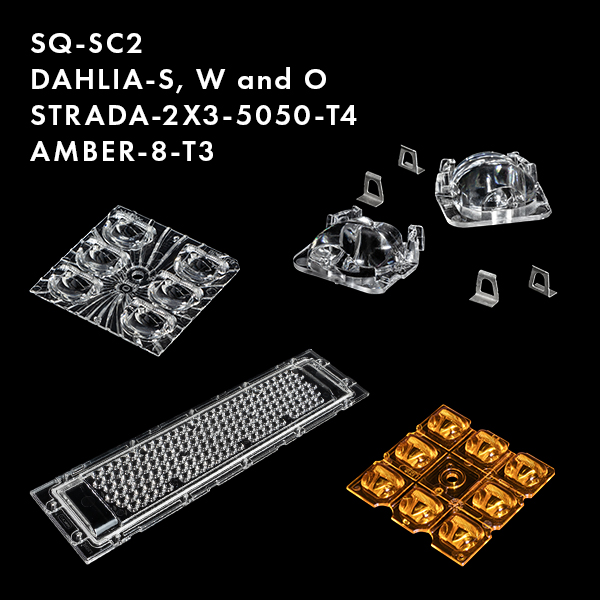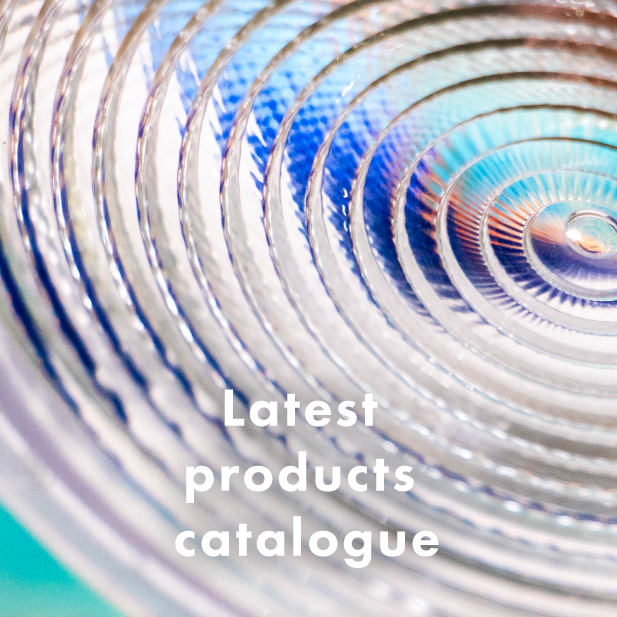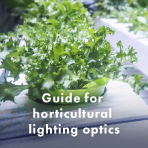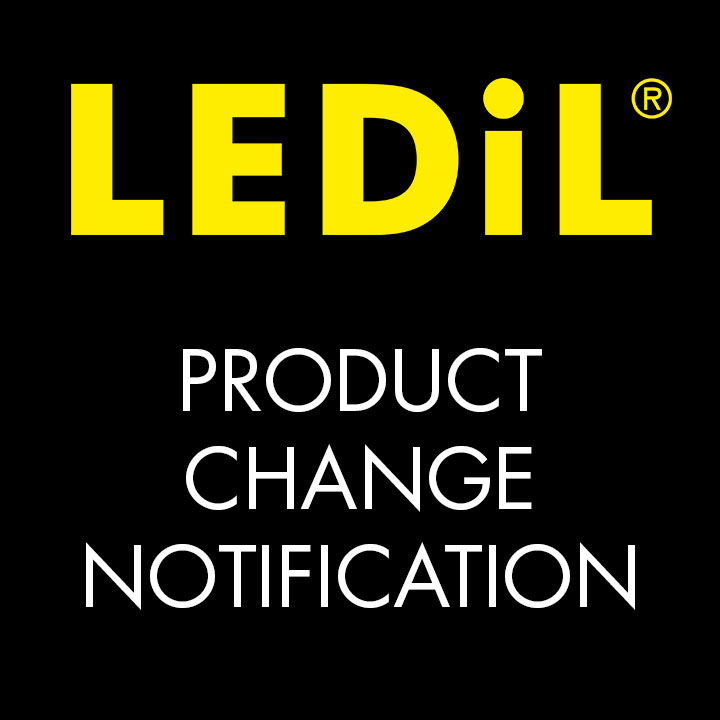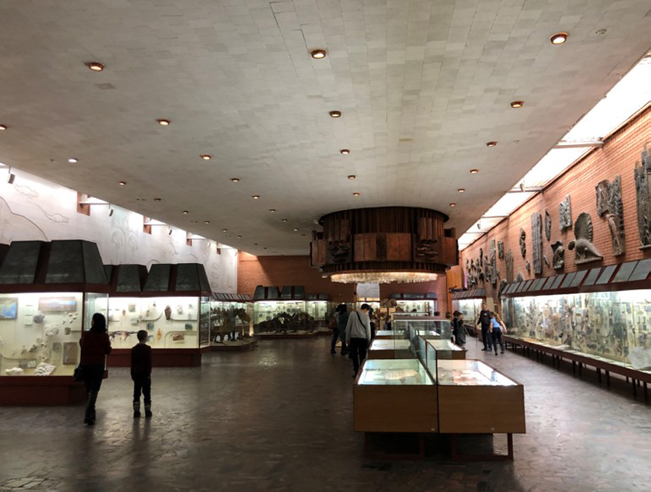NEWS
HORTICULTURAL LIGHTING
Until now horticulturists have only been able to dream of regulating plant growth, increasing harvests and prolonging the blooming time of plants. Thanks to LEDs, what few thought could ever be possible, is now a reality; welcome to the future.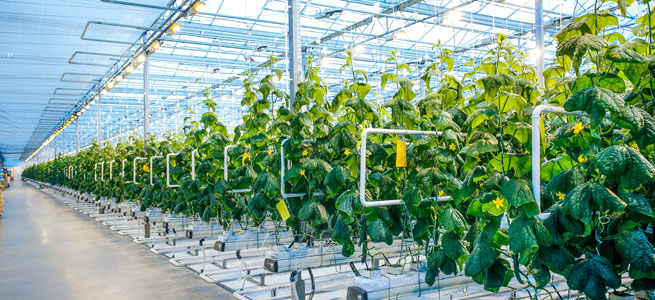 Plants have a completely different sensitivity to light colours compared to humans, consuming light and requiring photons for photosynthesis. Constant quality of the light spectrum is very important for production and plant growth is strongly determined by photosynthetic photon flux (PPF).
As LEDs allow us to control spectral content, we can match spectra to an individual plant’s needs according to species and growth stage. Lenses allow for better optical control, ensuring light is directed where it is required to ensure no wasted energy off target.
The amount and ratio of different wavelengths determine how, and how fast, plants grow and produce crop. LED horticultural lighting can be used for top lighting, vertical farming and intra-canopy lighting and can mimic daylight to provide stable, optimized growing conditions for each plant.
Uniform light and spectral distribution produces healthier, more productive plants. The right optics help focus light energy on the plants resulting in greater photosynthetic photon flux density (PPFD) using less power. Furthermore, optics aid higher crop yields and shorter growing cycles as well as reducing luminaire bill of material costs.
LEDs also have lower radiated heat, meaning luminaires can be placed closer to plants, allowing for more dense farms and reduced water consumption. And of course we mustn’t forget sustainability; LED luminaires have a much longer lifetime compared to traditional light sources, resulting in much reduced maintenance costs.
So the key questions to ask when designing horticultural lighting are; Does the light generate enough and the correct ratio of photons? Are the valuable photons going where they are needed, and how efficient is the luminaire at generating those photons? Of course none of this really matters if the components aren’t up to the job. At the end of the day you get out what you put in and a successful grow-light fixture is the sum of its components; like LEDiL’s recently launched horticultural optic PETUNIA2 and the soon to be released DAHLIA.
Plants have a completely different sensitivity to light colours compared to humans, consuming light and requiring photons for photosynthesis. Constant quality of the light spectrum is very important for production and plant growth is strongly determined by photosynthetic photon flux (PPF).
As LEDs allow us to control spectral content, we can match spectra to an individual plant’s needs according to species and growth stage. Lenses allow for better optical control, ensuring light is directed where it is required to ensure no wasted energy off target.
The amount and ratio of different wavelengths determine how, and how fast, plants grow and produce crop. LED horticultural lighting can be used for top lighting, vertical farming and intra-canopy lighting and can mimic daylight to provide stable, optimized growing conditions for each plant.
Uniform light and spectral distribution produces healthier, more productive plants. The right optics help focus light energy on the plants resulting in greater photosynthetic photon flux density (PPFD) using less power. Furthermore, optics aid higher crop yields and shorter growing cycles as well as reducing luminaire bill of material costs.
LEDs also have lower radiated heat, meaning luminaires can be placed closer to plants, allowing for more dense farms and reduced water consumption. And of course we mustn’t forget sustainability; LED luminaires have a much longer lifetime compared to traditional light sources, resulting in much reduced maintenance costs.
So the key questions to ask when designing horticultural lighting are; Does the light generate enough and the correct ratio of photons? Are the valuable photons going where they are needed, and how efficient is the luminaire at generating those photons? Of course none of this really matters if the components aren’t up to the job. At the end of the day you get out what you put in and a successful grow-light fixture is the sum of its components; like LEDiL’s recently launched horticultural optic PETUNIA2 and the soon to be released DAHLIA. NEWS
Introduction to horticultural lighting
Find related products
Check our Guide for Horticultural Lighting Optics
HORTICULTURAL LIGHTING
Until now horticulturists have only been able to dream of regulating plant growth, increasing harvests and prolonging the blooming time of plants. Thanks to LEDs, what few thought could ever be possible, is now a reality; welcome to the future. Plants have a completely different sensitivity to light colours compared to humans, consuming light and requiring photons for photosynthesis. Constant quality of the light spectrum is very important for production and plant growth is strongly determined by photosynthetic photon flux (PPF).
As LEDs allow us to control spectral content, we can match spectra to an individual plant’s needs according to species and growth stage. Lenses allow for better optical control, ensuring light is directed where it is required to ensure no wasted energy off target.
The amount and ratio of different wavelengths determine how, and how fast, plants grow and produce crop. LED horticultural lighting can be used for top lighting, vertical farming and intra-canopy lighting and can mimic daylight to provide stable, optimized growing conditions for each plant.
Uniform light and spectral distribution produces healthier, more productive plants. The right optics help focus light energy on the plants resulting in greater photosynthetic photon flux density (PPFD) using less power. Furthermore, optics aid higher crop yields and shorter growing cycles as well as reducing luminaire bill of material costs.
LEDs also have lower radiated heat, meaning luminaires can be placed closer to plants, allowing for more dense farms and reduced water consumption. And of course we mustn’t forget sustainability; LED luminaires have a much longer lifetime compared to traditional light sources, resulting in much reduced maintenance costs.
So the key questions to ask when designing horticultural lighting are; Does the light generate enough and the correct ratio of photons? Are the valuable photons going where they are needed, and how efficient is the luminaire at generating those photons? Of course none of this really matters if the components aren’t up to the job. At the end of the day you get out what you put in and a successful grow-light fixture is the sum of its components; like LEDiL’s recently launched horticultural optic PETUNIA2 and the soon to be released DAHLIA.
Plants have a completely different sensitivity to light colours compared to humans, consuming light and requiring photons for photosynthesis. Constant quality of the light spectrum is very important for production and plant growth is strongly determined by photosynthetic photon flux (PPF).
As LEDs allow us to control spectral content, we can match spectra to an individual plant’s needs according to species and growth stage. Lenses allow for better optical control, ensuring light is directed where it is required to ensure no wasted energy off target.
The amount and ratio of different wavelengths determine how, and how fast, plants grow and produce crop. LED horticultural lighting can be used for top lighting, vertical farming and intra-canopy lighting and can mimic daylight to provide stable, optimized growing conditions for each plant.
Uniform light and spectral distribution produces healthier, more productive plants. The right optics help focus light energy on the plants resulting in greater photosynthetic photon flux density (PPFD) using less power. Furthermore, optics aid higher crop yields and shorter growing cycles as well as reducing luminaire bill of material costs.
LEDs also have lower radiated heat, meaning luminaires can be placed closer to plants, allowing for more dense farms and reduced water consumption. And of course we mustn’t forget sustainability; LED luminaires have a much longer lifetime compared to traditional light sources, resulting in much reduced maintenance costs.
So the key questions to ask when designing horticultural lighting are; Does the light generate enough and the correct ratio of photons? Are the valuable photons going where they are needed, and how efficient is the luminaire at generating those photons? Of course none of this really matters if the components aren’t up to the job. At the end of the day you get out what you put in and a successful grow-light fixture is the sum of its components; like LEDiL’s recently launched horticultural optic PETUNIA2 and the soon to be released DAHLIA.

